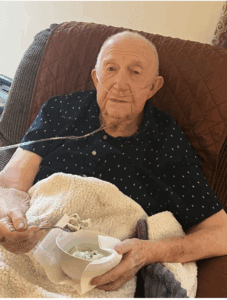Since dissociation is the essence of trauma, it’s not possible to treat trauma without understanding dissociation. As EMDR therapists, we need to understand it. In my view, there are two opposite issues with EMDR therapists and dissociation, and therefore with how to approach education about it.
Some of us find dissociation intimidating and see it as too risky to work with, to the point of being spooked when it emerges in training practicums or in a session. Some of us refer out immediately when we see it. I’m calling this the Too Cautious group, sending clients to another clinician at the first indication of dissociative process, and thus missing an opportunity to help people with all that we know about the Adaptive Information Processing model and EMDR.
While some may be too cautious with dissociation, others know too little about it and so are not cautious enough. This group is not always aware of the potential risks that come with inadequate history taking and preparation. I’m calling this group the Not Cautious Enough group. While I realize there are different views on this subject, my belief is that premature, unprepared processing of memories can result in destabilization and put a client in serious jeopardy resulting in the need for significant therapeutic repair.
Both the Too Cautious group and the Not Cautious Enough group–all of us–need more information about working with persons with dissociative symptoms. What’s needed is training that normalizes and demystifies the subject, while at the same time informing us about ways to recognize and effectively work with it, using Adaptive Information Processing principles and EMDR Therapy Standard Protocol modifications.
Dissociation training should include direction in learning about our own dissociative tendencies and ego states. Reflecting and learning about ourselves in this way can help to make this important subject less “other.” In this way, we can approach learning about dissociation with much less fear. It is after all, something our brains were built to do. One problem is the question of what exactly is dissociation.
One group of authors in treating complex trauma, describes dissociation as “a continuum of non-realization: not real, not true, not mine, not me.” Kathy Steele identifies four ways dissociation is defined in the literature.
- Alterations in awareness and consciousness (attentional problems): spaciness, absorption, rumination, detachment
- Physiological shutdown: dorsal vagal response
- Depersonalization/derealization: alterations in experience of time, one’s person, and place, common in many diagnoses and in times of stress, fatigue, or illness
- Dissociation of self and personality: ego states, self states resulting in dissociative disorders
Steele points out that alterations in awareness and consciousness are treated with mindfulness; shutting down is treated with physical reactivation; and depersonalization (the most challenging) can be treated with mindfulness. Dissociation of self is treated with mindfulness, reactivation, and system, or “parts,” work.
So, I’m proposing that, as EMDR therapists, we find ourselves sometimes too put off by dissociation and think we cannot work with clients who dissociate. Or, in the opposite direction, a lack of caution with dissociative clients can lead to significant risk, since memory work might be done without proper preparation and stabilization.
Training about dissociation is needed for both groups of us–and everyone in between. The question is how to deliver training in a way that normalizes dissociation as something we all do, and in a way that empowers clinicians to feel we are competent in assessing and treating more serious dissociation and its many attendant issues. With proper preparation and modifications, EMDR Therapy and the Adaptive Information Processing model are powerful tools for helping persons with dissociative symptoms to heal and lead healthy lives. With adequate attention paid to preparation techniques and Standard Protocol modifications, we as EMDR therapists can more effectively treat clients with complex trauma backgrounds and dissociative symptoms.
References
Gonzalez, Anabel and Dolores, Mosquera, EMDR and Dissociation: The Progressive Approach, First Edition (Revised), 2012.
Knipe, Jim, EMDR Toolbox: Theory and Treatment of Complex PTSD and Dissociation, Second Edition, 2019.
“Dissociation: Sharing From a Personal Place, An Interview with Jamie Marich,” in Go With That, EMDRIA Magazine, June, 2019, pp. 5-6.
Jamie Marich, “Session 424: Demystifying and Humanizing Dissociation in EMDR Therapy Practice” EMDRIA Conference, 2019.
Kathy Steele, Suzette Boon, Onno Van der Hart, Treating Trauma-Related Dissociation: a Practical, Integrative Approach. W.W. Norton & Company, 2017, p. 4.[1]Kathy Steele, “Advanced Issues: Chronic Shame, Resistance, and Traumatic Memory,” Presentation at EMDRIA Kansas City Regional Network, March 1-2, 2019, Kansas City.
Kathy Steele, Webinar on Dissociation, May 25, 2019.
Mosquera, Dolores, Working with Voices and Dissociative Parts Disorders, Institute for the Treatment of Trauma and Personality Disorders, 2019.
“EMDR Adult, Complex Trauma & Dissociation Specialist Intensive Program
An Integrative Progressive Approach to Developmental Trauma: Working with Complex PTSD and Dissociative Disorders,” Dolores Mosquera and Kathy Steele, Agate Institute, Phoenix, July, 2019.















One Response
Can you tell me what EMDR experts in Seattle have been trained in Dissociative Disorder? I’m having difficulty in finding experts in identifying Dissociative Disorders. EMDR looks like a viable technique but I’m having difficulty finding an expert in Seattle who works in this area.